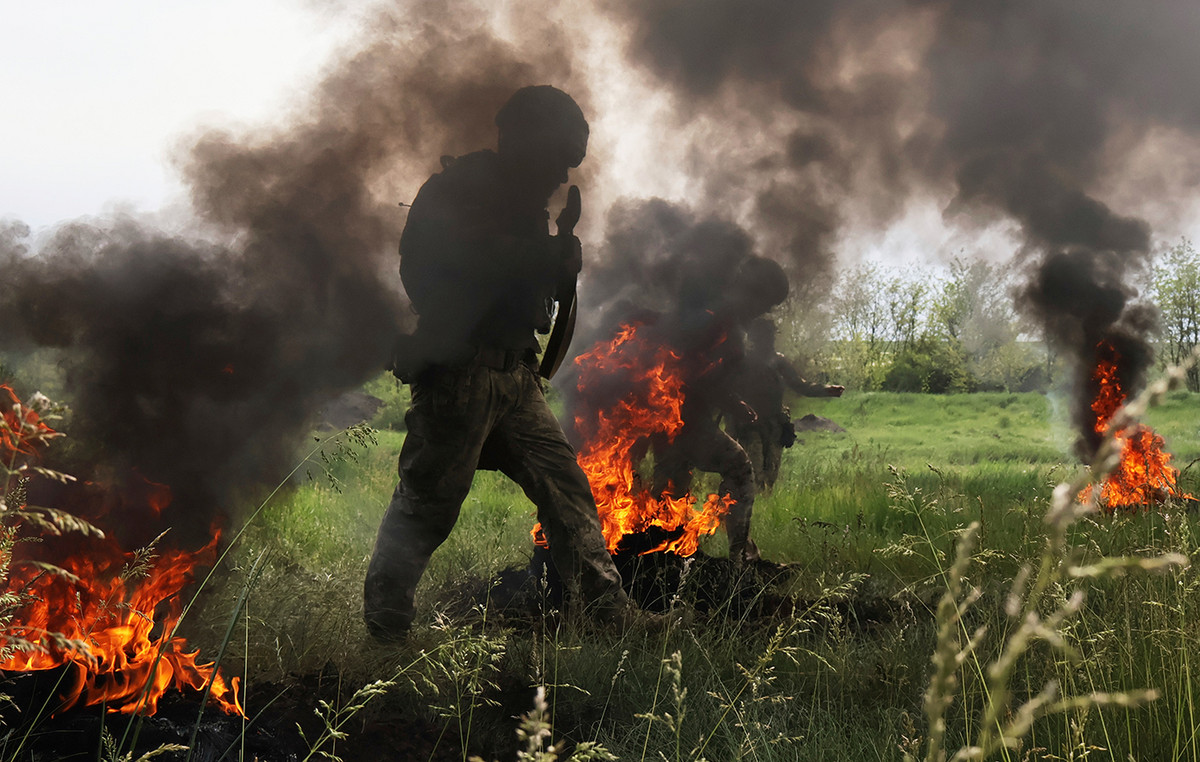“The invasion ofUkraine on the part of Russia marks a decisive turning point in European history“. Prime Minister Mario Draghi’s speech in the Senate began like this and went on with other references to history. “In recent decades, many had deluded themselves that war would no longer find a place in Europe. That the horrors that characterized the twentieth century were unrepeatable monstrosities … The images that come to us from Kiev, Kharkiv, Mariupol and other cities in Ukraine fighting for Europe’s freedom mark the end of these illusions. The heroic resistance of the Ukrainian people, of its president Zelenskythey put a new reality in front of us and force us to make choices that were unthinkable until a few months ago ».
In addition to the European Union which for the first time decided to send weapons to an external country, there is historic choice of Switzerland, which adhered to the sanctions, leaving its neutrality. How long had it lasted? For more than 200 years, from the time of the Congress of Vienna. When the great powers reunited after Napoleon’s defeat in 1815, Switzerland became neutral: back then it was an enforced neutrality that became a choice in the following centuries.
The Swiss Confederation had been invaded by France in 1798 and then divided into 19 autonomous and equal cantons, no longer the previous 13. The latter wanted to return to the pre-Napoleonic situation, the others wanted to continue to exist. It came to the division into 22 cantons to bring a equilibrium, necessary in a country in the mess of two powers such as France and Austria. Neutrality is a consequence of the buffer position. In no way was stability achieved and neutrality was imposed. Tsar Alexander I decreed the maintenance of the cantons and neutrality, despite the Austrian chancellor Metternich pointing to the old system.
There Swiss precisely because of his position he had often advocated neutrality even before 1798. The first declaration of neutrality is more than a century earlier, 1674, but not in the current terms and with the possibility of sending troops as recalled by the Historical Dictionary of Switzerland .
The history of the red phone instead it is much closer. It dates back to 1963, after the Cuban missile crisis. A special communication line was installed between the United States and the Soviet Union for dialogue between the two superpowers in times of high risk of conflict: it was the red telephone or the red line or the Moscow-Washington hotline, even if they were teleprinters, more than one to avoid a blockade. They became a fax in 1988, then an encrypted computer system. From the US came the proposal to create it again. No response from Moscow.
A more recent communication model may be that of the line established in 2015 for operations in Syria. The historical one went from the Kremlin to the Pentagon, not in the White House. On June 20, 1963, in Geneva, Switzerland, the USA and the USSR signed the Memorandum of Understanding for the line after the Third World War had touched upon in 1962 with the Soviet nuclear missiles installed in Cuba. The first message on August 30. 1963: “The swift brown fox jumped over the back of the lazy dog 1234567890”. English had all the numbers and letters of the alphabet. The Russian response was about sunrise in Moscow. They were written communications and each one translated what he received.
In 1983 there was a risky misunderstanding on the Soviet side: a malfunction of the satellite sighting systems suggested a nuclear attack. Lieutenant Colonel Stanislav Petrov, he realized the mistake. The International Day for the Total Elimination of All Nuclear Weapons has been dedicated to him since 2013, on September 26, when he did the right thing.
Other stories of Vanity Fair that might interest you:
– Ukraine: night in the shelters in Kiev, Russian vehicles close to the city
– Ukraine, “We will spend the night in this bunker, in the cold”
– Attack on Ukraine, protests also in Russian cities
– Ukraine, the cry of civilians: “We are terrified”
– Ukraine, the attack started during the night
– Ukraine: “Awakened by the bombing, I threw up with fear”
– Ukraine, Natalia Onipko: «The world help us. We can’t do it alone “
– Putin’s signature: for Russia Donetsk and Lungansk are independent from Ukraine
– Ukraine, the drama of the fleeing population
Source: Vanity Fair
Donald-43Westbrook, a distinguished contributor at worldstockmarket, is celebrated for his exceptional prowess in article writing. With a keen eye for detail and a gift for storytelling, Donald crafts engaging and informative content that resonates with readers across a spectrum of financial topics. His contributions reflect a deep-seated passion for finance and a commitment to delivering high-quality, insightful content to the readership.







